Thessaloniki Tourism Information
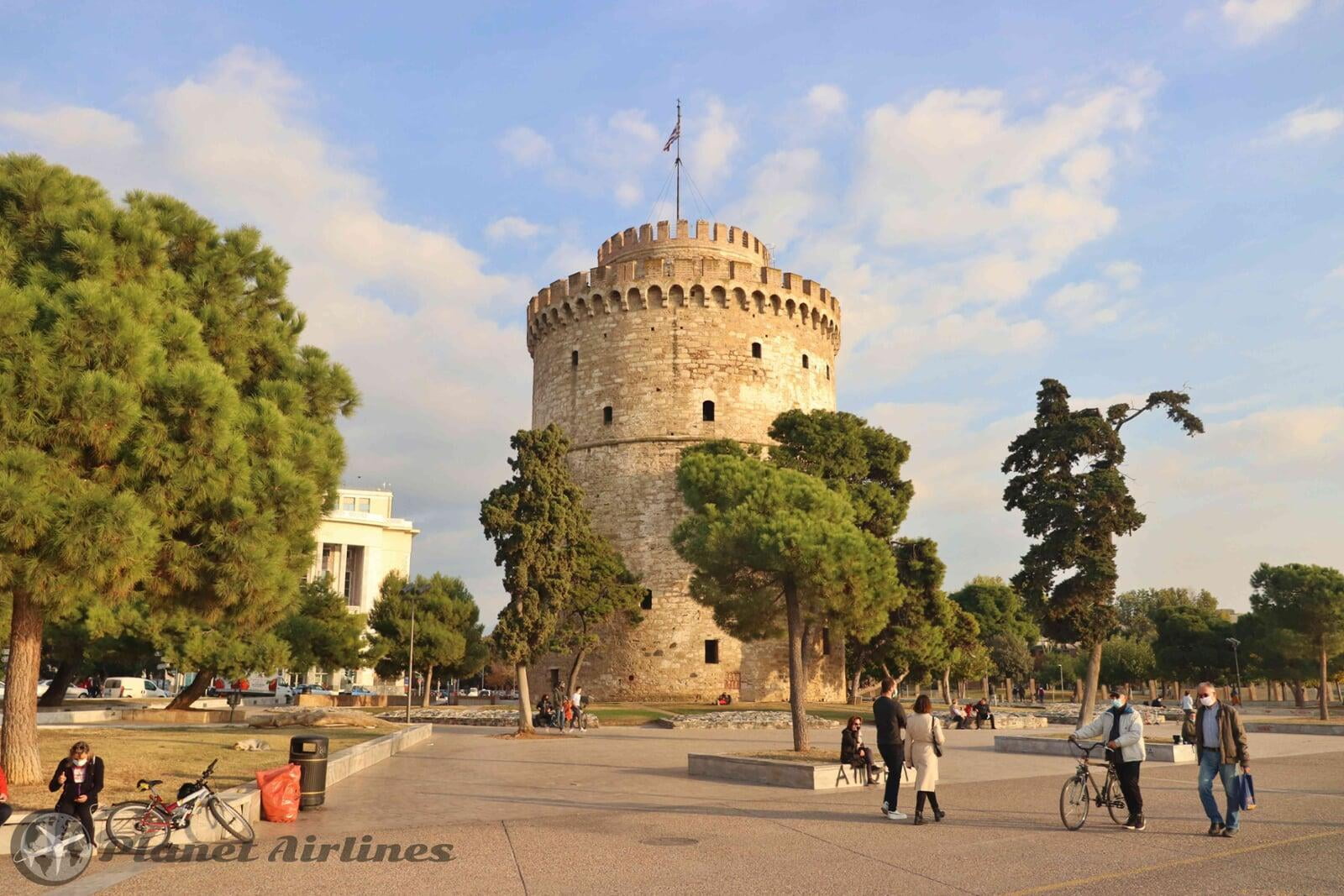
Located within northern Greece, Thessaloniki is the second-biggest of all the Greek cities, after Athens, Thessaloniki is often referred to as the country's cultural capital.
Also known as 'Salonica', Thessaloniki is the perfect place to indulge yourself in all kinds of luxury and treats, with superb shopping, fine dining, a spirited nightlife, some quality museums, and plenty of concerts and events, especially during the summer season.
The are a number of sites which really enhance the overall appearance of Thessaloniki, namely its historical White Tower, the Byzantine city walls, traditional Greek architecture, and it's pretty waterfront, which is lined with cafes and shops. It is known, for its wide avenues, parks and squares, some travellers consider it far more attractive than Athens.
The city's past under Ottoman rule shows in numerous Byzantine churches, and museums housing Byzantine artefacts. Its rich Jewish tradition reflects in its synagogues and the Jewish Museum, while renowned monasteries display the influence of early Christian communities.
Authorities have imposed regulations against skyscrapers going up as the area is prone to earthquakes. This means that residents and visitors can enjoy seaside views from the city's streets. Visitors can try the Turkish Baths, wander the central market, or relax at Aristotelous Square's cafes and restaurants.
Thessaloniki also has a vibrant nightlife, with a number of lively bars and clubs. It's a city for all ages!
Thessaloniki has aspects of Mediterranean and even humid subtropical climates. Summers (June to August) are very hot and humid with average daytime highs 35°C and the possibility of thunderstorms. Winters (December to February) are much cooler with dry, fresh days. Winter temperatures average between 3°C and 12°C.
It tends to get more rainy between September and January, but the region can receive rain at any time of year, with heat building up during the Summer and then busting out in the form of strong winds, heavy falls and thunderstorms.
Although the city remains very popular during summer, which is peak tourist season throughout Greece, the best time to visit is in spring and autumn. Conditions are cooler but sunny enough to enjoy the outdoors. Saying that, Winter is the best time to visit as accommodation is much cheaper during off-season. Visitors will avoid crowds, but it does not get a little cold, with rain or even snow on the cards.
Thessaloniki Airport is located around 15 km to the south-east of the city centre, near to Thermaikos. The airport serves many large European airline and budget charter flights, and is connected to the city centre by 24-hour bus transport, operated by OASTH. The bus X1 (N1 at night) takes around 45 minutes and costs €2 for a single ticket. More bus information. Aegean and Olympic Airlines are especially prominent here and travel to more than 15 different domestic destinations, including Athens, Chios, Hania, Iraklio (Crete), Kerkyra, Limnos, Mytilini, Samos and also Skyros.
The city of Thessaloniki is a major transport hub for Northern Greece and is often referred to as a 'gateway to the Balkans'. Many tourists holidaying in Thessaloniki choose to travel around by rental car, although bus transport is on hand and for short distances is very affordable.
For long distance travel, Thessaloniki is home to a large train station, connecting to the Greek rail network and allowing you to easily reach destinations further afield.
✔️Tip: Bus number 50 provides a good option for a tour. It makes the rich historical and cultural heritage of Thessaloniki more accessible to its citizens and visitors. The bus departs from the White Tower for a 50-minute tour around the city's main historical and cultural monuments. The tour is supported by a telematics based audio-visual material (in Greek and English).
For those who are looking for some extra activities and cultural things to do, you will find archaeological wonders, plus a wealth of early Christian, Roman and Byzantine relics, Thessaloniki truly is a treasure full of attractions. Its famous churches are among its greatest features.
Many of the Thessaloniki's monuments are UNESCO-listed heritage sites. Two popular and interesting landmarks are the Roman Forum, situated in the ancient Greek agora, and the White Tower, an iconic building with a long and bloody history. There are also world-class museums to be explored, including the Thessaloniki Archaeological Museum, which is considered one of the best in Europe.
The areas just outside Thessaloniki also house incredible archaeological sites. Vergina, or ancient Aigai. Visitors can marvel at the ancient palace complex and theatre, as well as numerous royal tombs at this UNESCO World Heritage Site. Mount Athos, with its mysterious monasteries and rugged scenery is also close by, though only men are allowed to visit. A permit is necessary for this excursion. Travellers can hike up Mount Olympus also if you want some sport and active tourism!
Below you will find in more detail the main highlights in Thessaloniki:
- The White Tower: This is the city's most famous landmark, the Tower, was originally built as part of the city walls to fortify the coast during Ottoman rule. It now stands, no longer quite white but still very imposing, on the seaside promenade south of the Archaeological Museum, having been restored and offering panoramic views of the city and harbour from its rooftop café.
It was used by the Ottomans as a prison, infamous for its brutality, and was the site for public executions; on the way up the winding staircase to the cafe visitors can peep into the dim rooms that were once used as cells. As a result of this notoriety as a brutal place it was known as the 'Tower of Blood' or the 'Red Tower' to local Greeks.
The tower contains a museum housing some Byzantine art and historical artefacts from Thessaloniki's history between 300 and 1,500 AD.


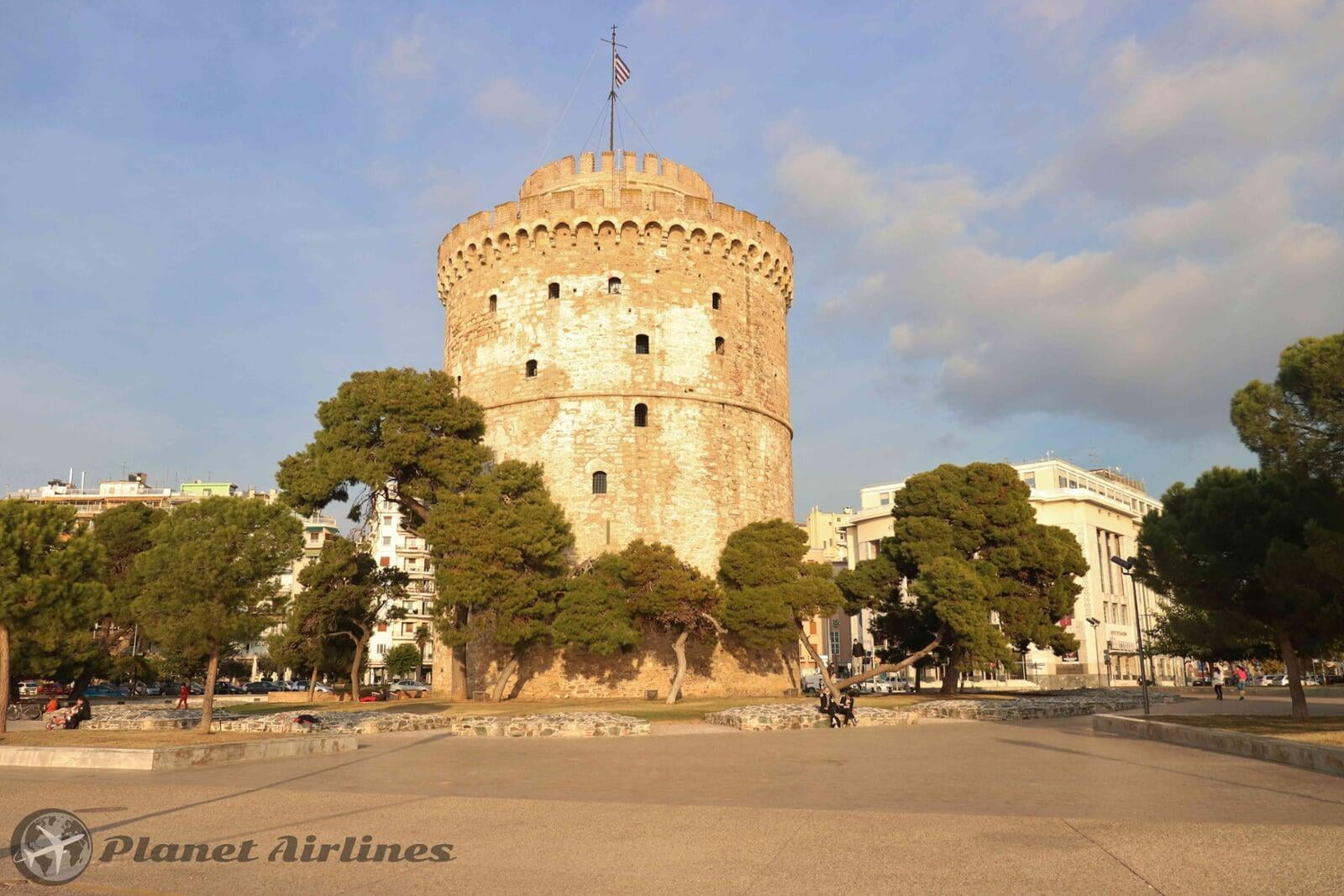
✔️Tip: Taking a walk in the evening along the waterfront of the Tower and its promenade, is a very rewarding experience, as you can watch a beautiful sunset on a clear sky!
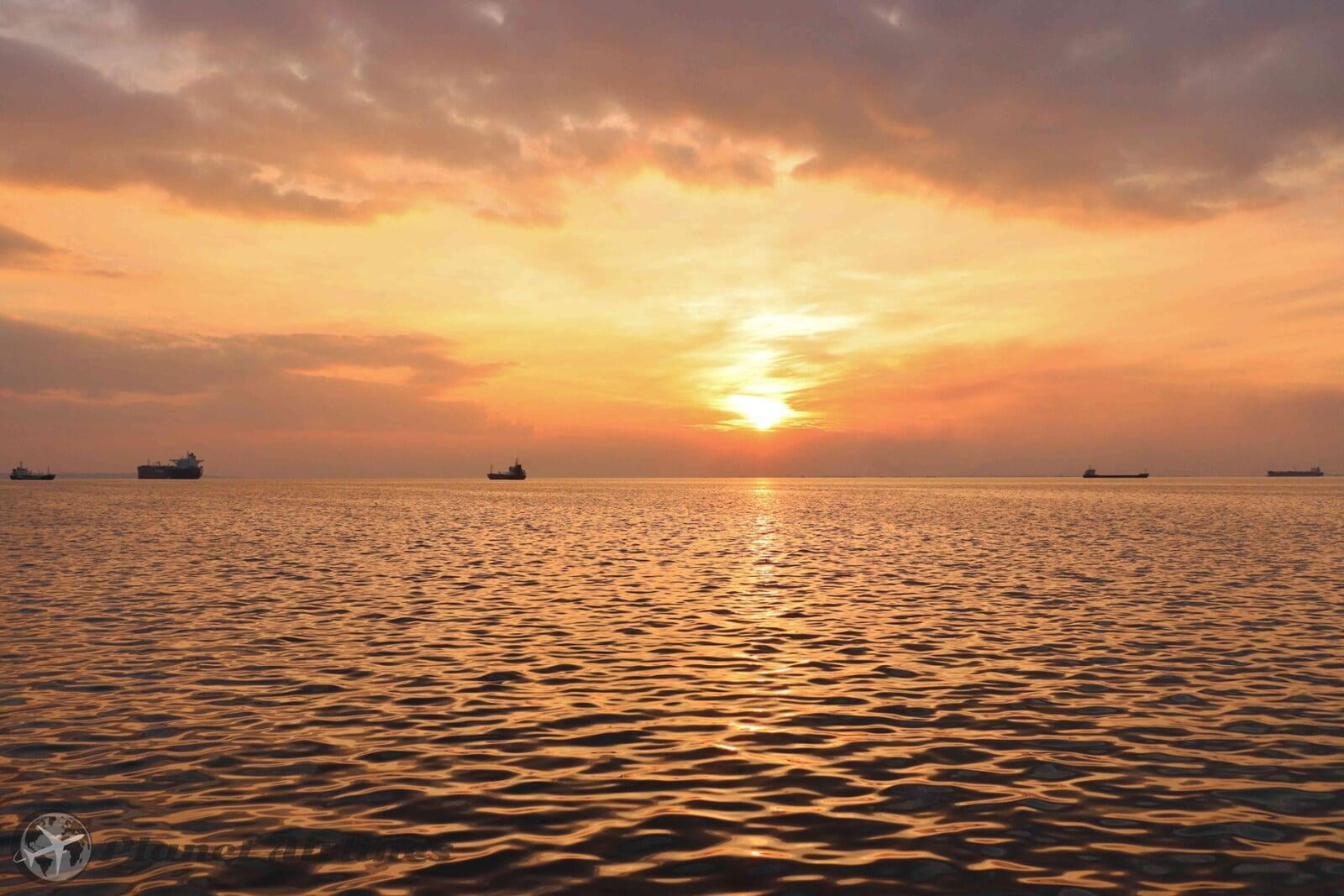
- Roman Forum: Close to one of the city's main bus terminals in Dikasterion Square lies the archaeological site of the ancient Greek agora or marketplace, which was later expanded to become a Roman Forum on two levels. The forum was the heart of the ancient city, and was discovered by workmen in the 1960s. The best-preserved component of the forum is the large theatre, which is still used for occasional summer concerts. On the southwest corner of the square is the magnificent church of Panagia Chalkeon. The Archaeological Museum built beneath the ruins houses some of the artefacts discovered in excavations on the site and a visit to the museum gives great context for exploring the site. Entry to the ruins is free but there are no written explanations, making the visit to the museum a useful stop. The site is closed on Mondays.
✔️Tip: The area around the excavations is full of artists, shops and taverns and there are some wonderful little places to buy traditional wares and souvenirs.

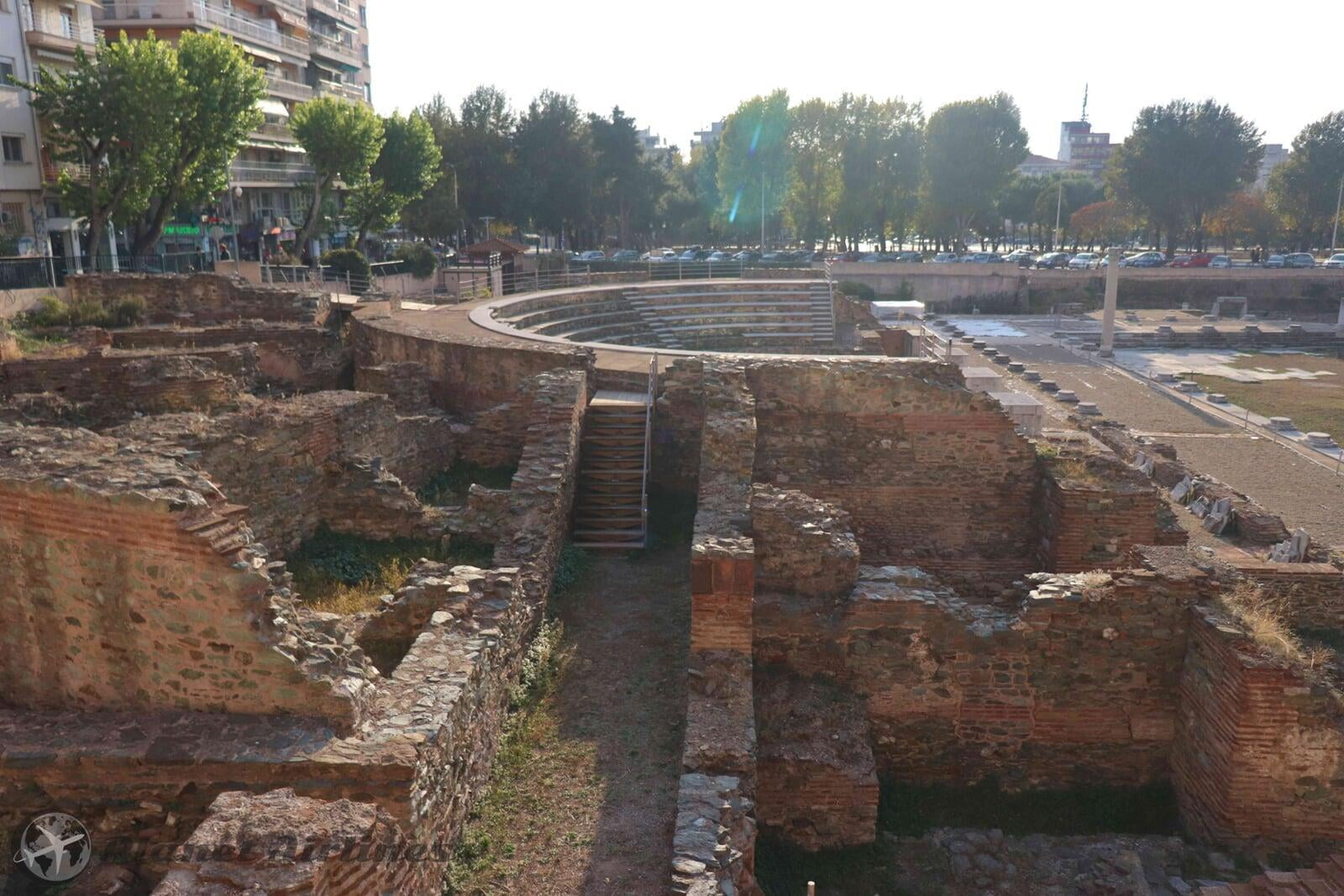


- Thessaloniki Archaeological Museum: is regarded as one of the finest museums in Europe; it is near the famous White Tower. The museum houses a huge collection including the incredible treasures from the tomb of Alexander the Great's father, Phillip of Macedon. Another treasured artefact is the 3rd century BC Derveni papyrus, the only intact ancient papyrus found in Greece. Other rooms in the museum contain exhibits depicting the history of the city from prehistoric days through to the Roman period. The museum will occupy visitors for a few hours if they are interested in history and archaeology and it is a well-organised and impressively laid out collection.
Entry to the museum is €8. More info at https://www.amth.gr/en
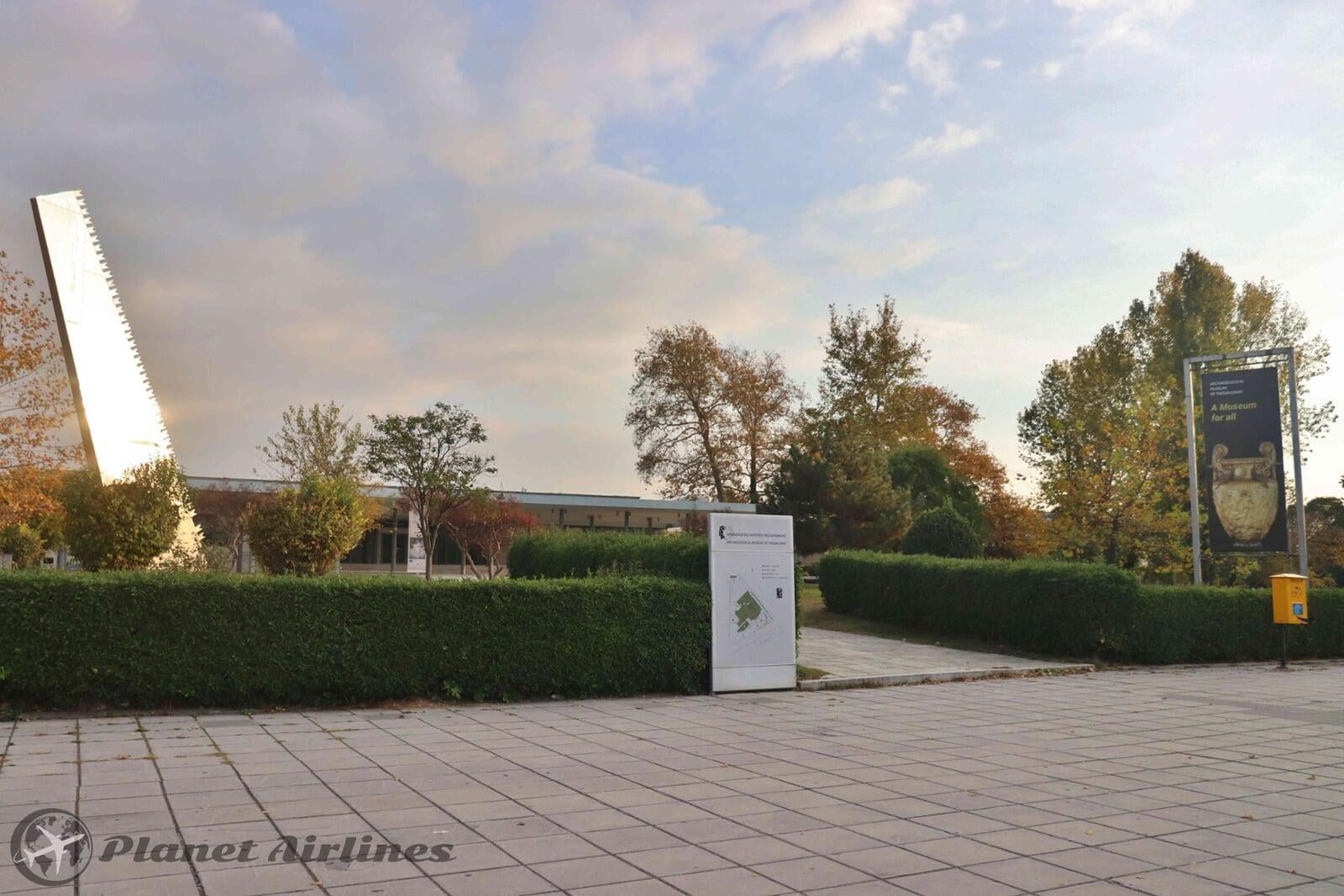
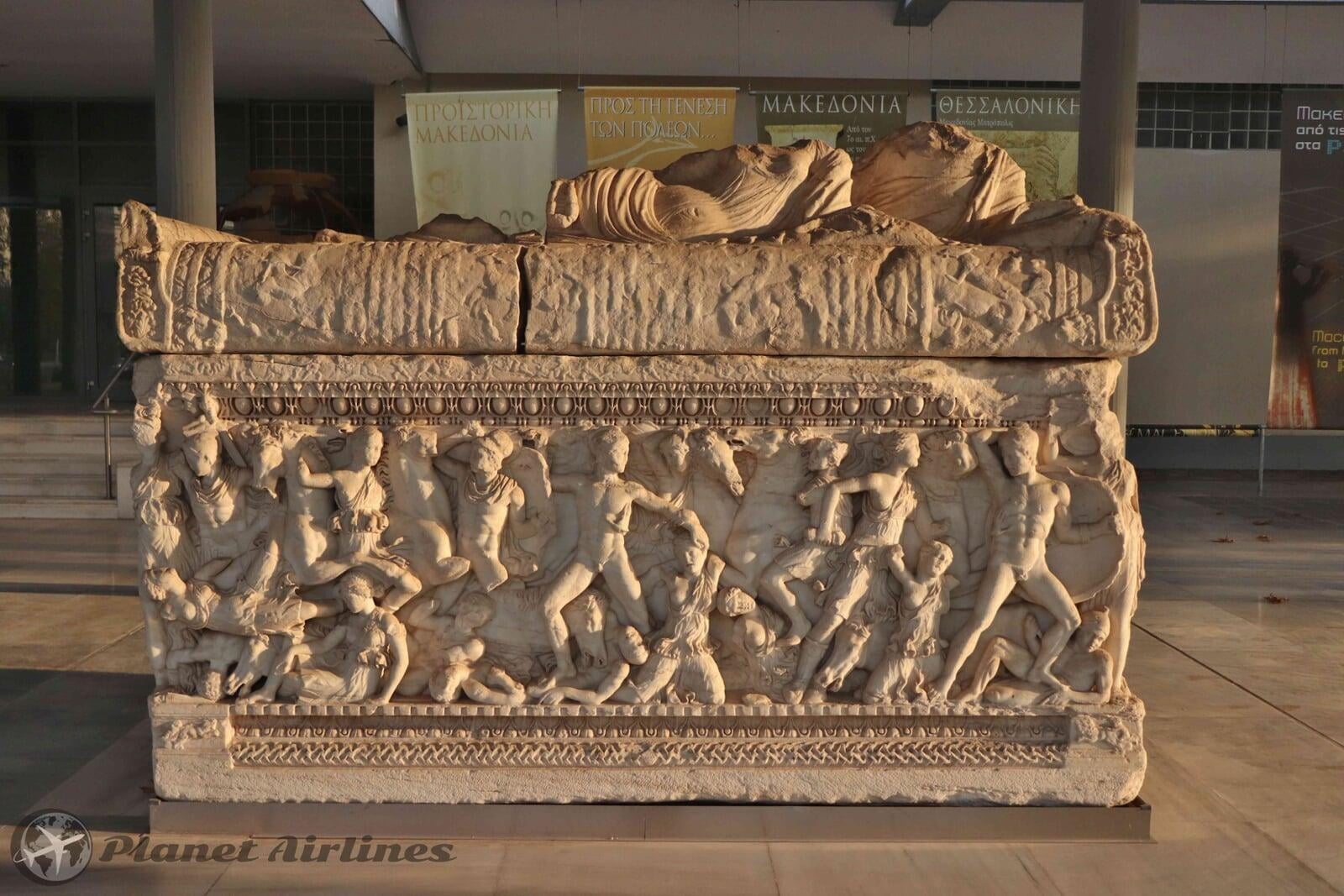

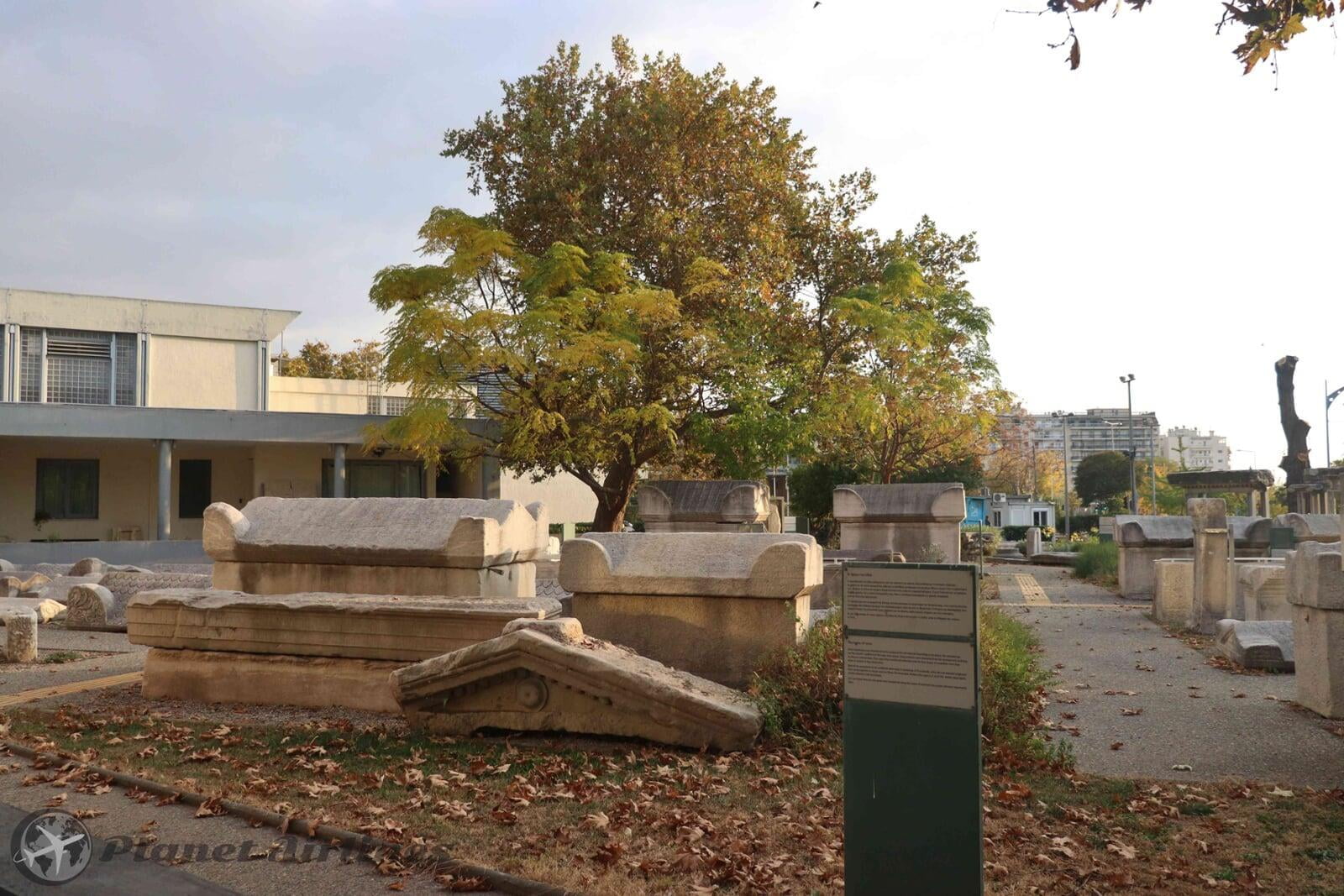
- Churches of Thessaloniki: Most of Thessaloniki's beautiful churches are situated along the quaint, narrow-cobbled streets of the Upper City area. They date from various eras, including Byzantine. In particular, visitors should look out for the domed Church of Saint George. Its history goes back to the 4th century.
Agia Sofia is Thessaloniki's largest and most famous Byzantine church. The Agii Apostoli and the beautifully frescoed Agios Nikolaos Orfanos are also must-sees.
❗Attention: Thessaloniki's churches are open to visitors, but often close during the afternoon. For this reason, visitors should try to tour them in the morning. Also, sightseers should follow local custom when entering. Some churches will not admit sightseers during services but tourists are always welcome to attend.

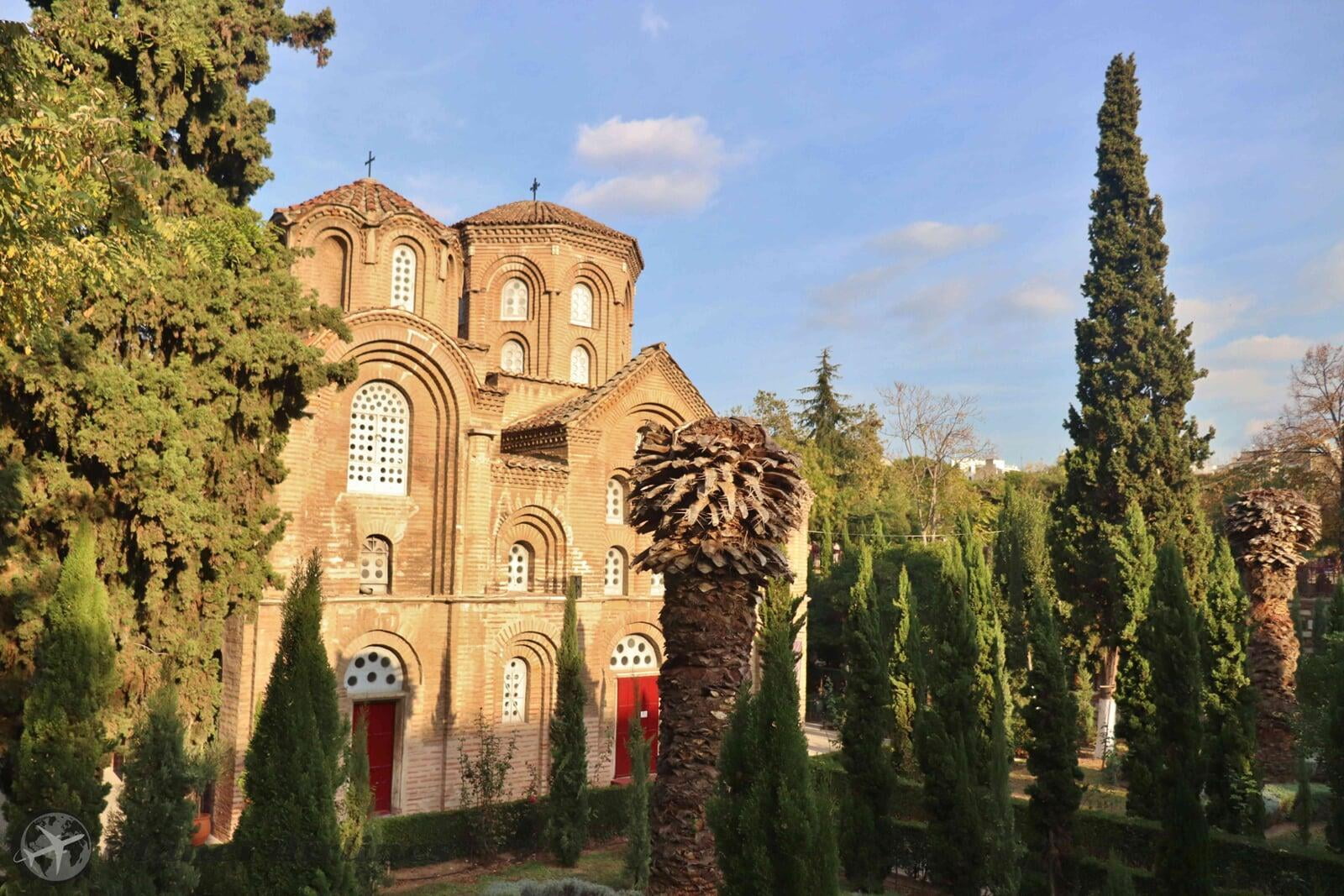

- Palace, Arch of Galerius and Tomb of Galerius / Rotunda (Mausoleum)Arch of Galerius and Tomb of Galerius / Rotunda (Mausoleum): Standing close to the Plateia Navarinou are three rather impressive monuments which relate directly to Galerius, a well-known Roman emperor from the 4th century. The remains of the Palace of Galerius quite reveal several sections of columns and walls that remain intact, along with some intricate floor mosaics. Close by is the Arch of Galerius, which was constructed more than 1,700 years ago to commemorate the emperor's important victories and features detailed stone carvings of soldiers fighting. On the northern side of the arch is the instantly recognisable Thessaloniki Rotunda, which stands on the Plateia Agiou and was originally built under the instruction of Galerius to serve as his mausoleum, although this was never actually the case.

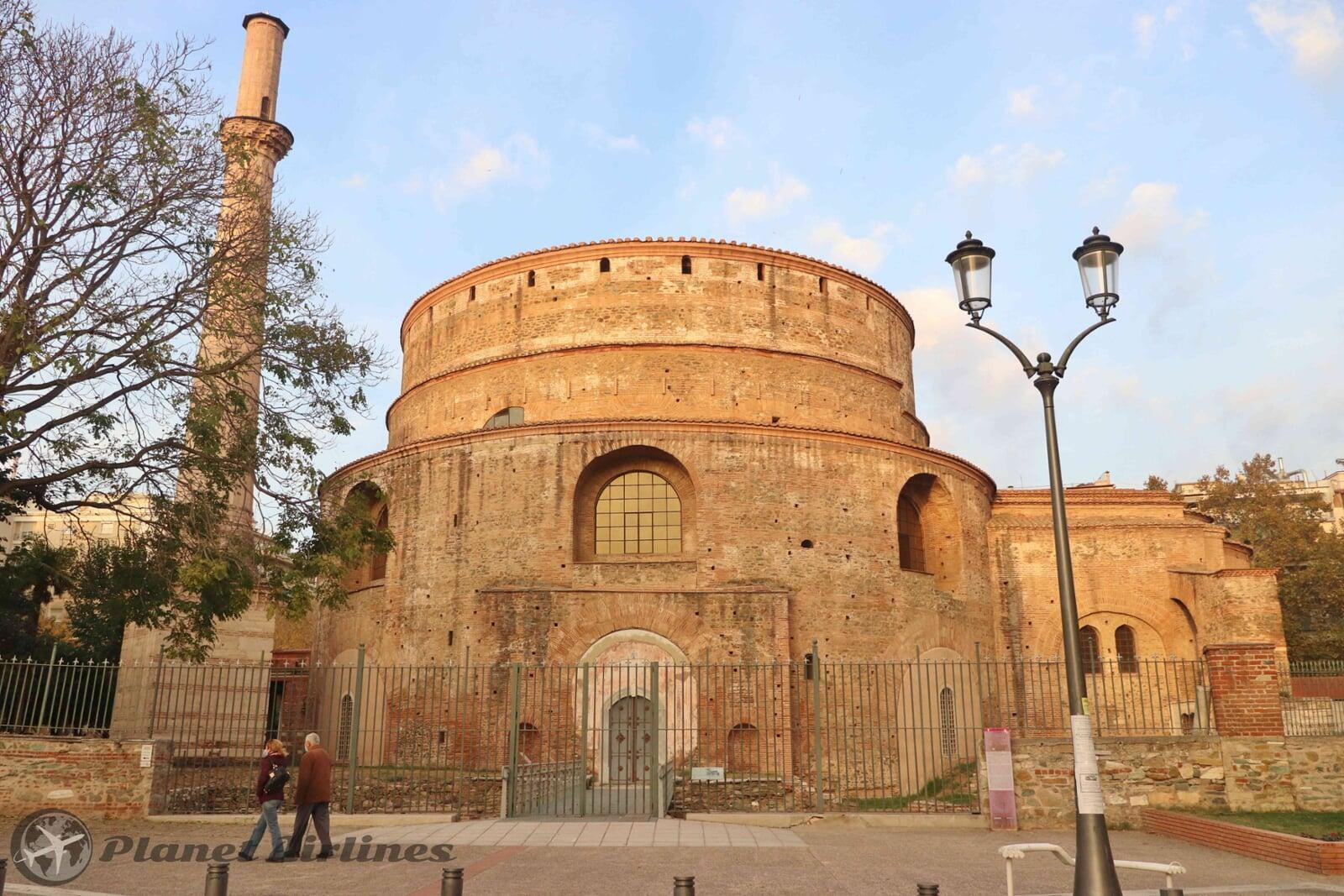
- Navarinou Square: Only a few minutes walking far from the imposing Aristotle Square, Navarinou Square can be found right in the heart of the centre of Thessaloniki. Navarinou Square is probably the most popular meeting spot among the students of the city, since it’s buzzing with modern coffee shops, as well as with a variety of nightlife options. The Gounari walkway is considered to be a famous haunt of the Thessaloniki’s locals. In fact, it has recently become an attraction for tourists due to its “alternative” and local vibrant atmosphere. The square dates back to the Roman period of the city, with the ruins of the palace of Galerius located within it.


The nightlife of Thessaloniki is well-known, with many bars, clubs, music halls and places for all tastes and ages. Ladadika is the hot spot of the town and the meeting place for young ages and, generally, for all locals and foreigners. Eat, drink, and dance without limits!
Those who want time to unwind for some shopping won't be disappointed, with many good quality products to be found all around central Thessaloniki, and you don't have to expect things to be too expensive, as you can haggle at the markets and get some decent bargains.
Although the actual city centre is relatively small, the shopping here is good, with plenty of local shops and bustling markets, selling everything from leather goods to olive oil. Located in central Thessaloniki, the beautiful shopping street of Agias Sophias is a good place to start, as is Mitropoleos Street and the Aristotelous Square.
The centrally located food market in Thessaloniki is a good place to find some cheap eats and souvenirs, while for clothing and fashion, head to the city's Mitropoleos and Proxenou Koromila shopping areas, and of course, Tsimiski Street. You are unlikely to find any bargains in these parts of Thessaloniki as such, but there is certainly plenty of choice.
For some of the cheapest things, head to West Egnatia, where some true bargains await. If you have time, head to Chalkeo Street or Kissouras Street, where a more quirky selection of shops reside, or pay a visit to the nearby Mediterranean Cosmos shopping mall, which is just a few kilometres outside of the city itself.
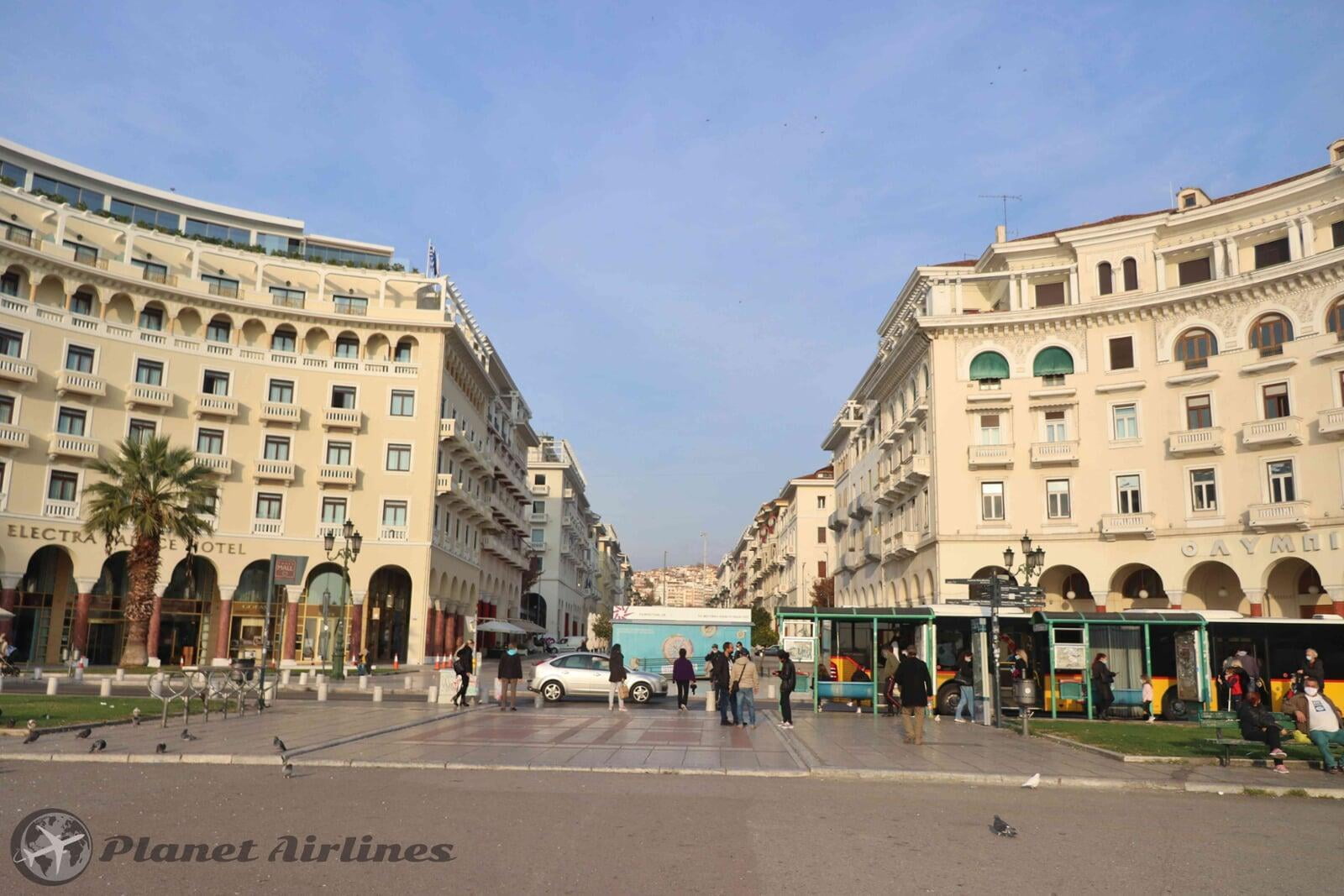
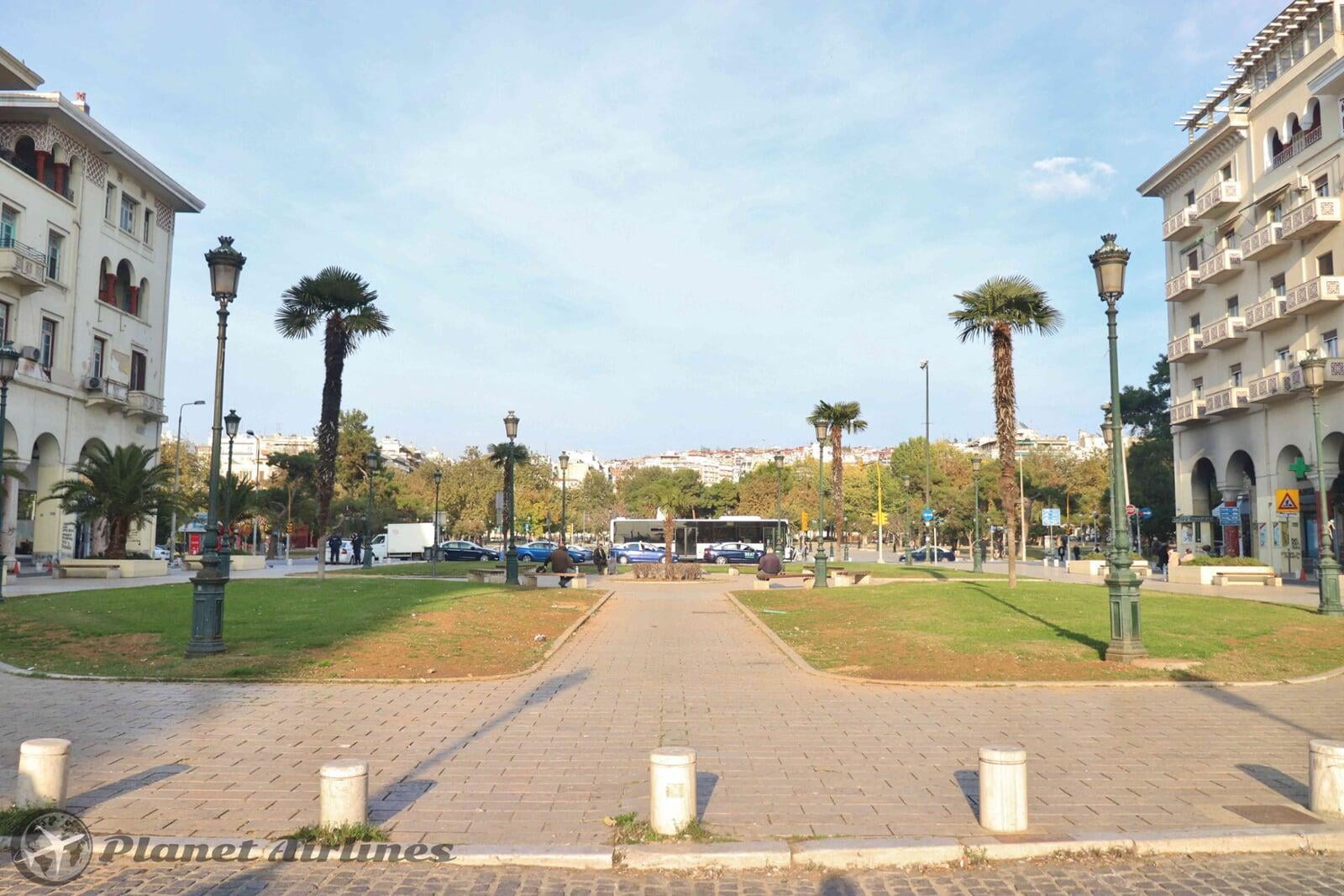
Home to a large number of hotels suitable for holidays, the availability and pricing of accommodation in Thessaloniki is greatly influenced by both the season and events.
Staying in Thessaloniki becomes in short supply during major festivals and conventions, and also much more expensive during the Summer.
Plan ahead if you want to grab better deals and look around as well not directly in the city centre.
Those travelling to the city and on a budget will find a very limited number of cheap hotels, although some fairly inexpensive accommodation is available at the very centrally located Tourist Hotel on Mitropoleos Street, and also at the Rex Hotel, which is conveniently near to the railway station.
Further budget lodging is provided by Thessaloniki's Youth Hostel, which is easy to find and resides in the very heart of the city, along Alexandrou Svolou Street. Budget accommodation can cost around €13 per night. Alternatively private rooms via Airbnb or Booking.com can be found for €20 per night.
The more mid-range hotels in Thessaloniki are easier to located and more plentiful in supply, and a huge improvement on any budget accommodation that you do find.
Average rooms cost €35 per night.
Those coming for a relaxing holiday will want to stay up to a week to take full advantage of the glorious weather and beaches nearby. Some local dining, shopping and even a trip or two around the area to get to discover some small local traditional Greek towns. There is plenty to keep you busy, as well as joining tours and guides. Not to mention the many cultural places where you can learn from Greek mythology and its ancient history.
However, if you are on a budget or short of time, a compact 3 nights would be enough time to see all the sights and visit some places in the outskirts.
The city centre and it's main sights are easy to walk around however, so you won't need to use much of the transport.
Thessaloniki Photo Slide 📷
















.png)